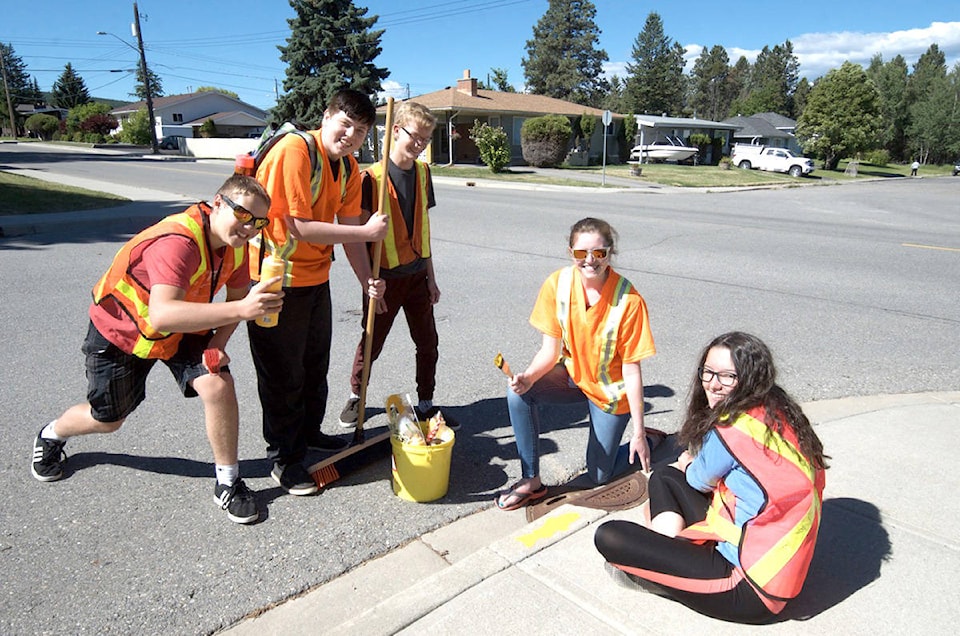Submitted
We turn on our taps and water comes out. We pull the plug, and there it goes. But where did the water come from? Where did it go? This year, students from Mount Baker, Parkland and Kootenay Christian Academy discovered—through in-class sessions, visits to their watersheds and taking to the streets to paint yellow fish on storm drains—that the answers to those questions are much more complex than the conveniences of modern life have led us to believe.
Their journey through the water cycle story was led by Know Your Watershed, an education program from the Columbia Basin Trust. This program, administered and managed by Wildsight, sees local educators visit classrooms for sessions on all things water and takes students on a full-day field trip into their community’s watershed. Over the course of a few days, students learn how their water gets from Joseph Creek to their faucet—and all about the return journey down the pipes, through wastewater treatment and back into the water cycle. Students visited the chlorination plant and Phillips Reservoir and learned about how water from Gold, Baker and Joseph Creeks all play a part in making sure Cranbrook homes have enough clean water, all year round.
Victoria Larsen’s Grade 9 science class from Parkland took their water investigation even further by learning about the challenges water managers have dealing with surface water runoff from a city with a lot of paved, impermeable surfaces. Most of this water is collected in storm drains, which are returned directly to local creeks and wetlands, along with any oil, antifreeze, detergents, pesticides, fertilizers and cigarette butts collected along the way.
To help raise awareness of the direct connection between our streets and our waterways via storm drains, Parkland students painted yellow fish beside 58 storm drains around the school. In the process, they had a number of discussions with curious neighbours, who wanted to learn more about what students were doing.
“This is such a perfect connection to the Grade 9 curriculum,” said teacher Victoria Larsen, “and the Student Action Project, chosen by the students, is a really important part of real, hands-on, inquiry-style learning.”
“Spring really is a perfect time to be out looking at issues that affect our water supply, and try to understand the complex variables that can change water quality, and water quantity in our local watersheds,” said Wildsight’s Know Your Watershed Coordinator Dave Quinn. And with the program being updated alongside the revised BC curriculum and moving from Grade 8 to Grade 9 classrooms this year, the 7th season of Know Your Watershed—much like the time between winter and summer—was one of transition.
Given that some students were getting a bonus year of watershed knowledge, topics were tailored to the individual classroom to avoid repetition. Some students learned about the 1964 Columbia River Treaty, the international agreement between Canada and the United States to coordinate flood control and optimize hydropower generation on both sides of the border. Some students participated in hands-on learning about water quality monitoring and macroinvertebrates, those tiny creatures that live in our waterways as indicators of stream health. Water cycles, our daily water use, and the challenges of wastewater treatment were all on the learning menu.
